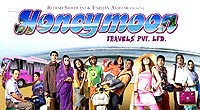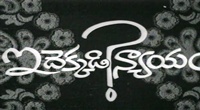Ultraman (?????? Urutoraman) is a Japanese tokusatsu science fiction television series created by Eiji Tsuburaya. It is a follow-up to Ultra Q, though not technically a sequel or spin-off. Tsuburaya Productions made 39 episodes (40, counting the pre-premiere special) that aired on Tokyo Broadcasting System (TBS) from July 17, 1966 to April 9, 1967. Its premiere topped the average rating set by Ultra Q and kept climbing each week, marking the show as a success.
| Ultraman | |
|---|---|
Title card reading, "Ultraman: A Special Effects Fantasy Series" | |
| Genre |
|
| Created by | Eiji Tsuburaya |
| Written by |
|
| Starring |
|
| Opening theme | Ultraman Theme by the Misuzu Children's Choir |
| Composer(s) | Kunio Miyauchi |
| Country of origin | Japan |
| Original language(s) | Japanese |
| No. of episodes | 39 |
| Production | |
| Running time | 24 minutes |
| Production company(s) | Tsuburaya Productions |
| Release | |
| Original network | TBS |
| Original release | July 17, 1966 – April 9, 1967 |
| Chronology | |
| Preceded by | Ultra Q |
| Followed by | Ultra Seven |
Although Ultraman is the first series to feature an Ultraman character, it is the second installment in the Ultra Series, after Ultra Q. This is signified in the show opening by the Ultra Q logo exploding into the Ultraman logo. Ultraman and its titular hero became major pop culture phenomena in Japan, spawning dozens of sequels, spin-offs, rip-offs, imitators, parodies and tributes.
Screenplay
When the Earth is threatened by alien invaders and giant monsters, the world relies on the Science Patrol, a special anti-monster defense agency armed with high-tech weaponry and vehicles to combat these threats from the unknown. When the Science Patrol's weaponry is ineffective and all hope is lost, one of their members, Hayata, transforms into a giant alien called Ultraman to defeat the monstrous menace threatening the Earth, unbeknownst to the other Science Patrol members, who are unaware of his secret identity.
Development
Due to the success of Ultra Q, Tokyo Broadcasting System (TBS) wanted a new monster-themed show from Tokyo Broadcasting System, this time filmed in color. TBS hoped to create continuing series with Tsuburaya Productions.
Eiji Tsuburaya and writer Tetsuo Kinjo chose to take the barebones idea of Ultra Q about civilians and scientists dealing with monsters and have a group specifically created to deal with monsters and supernatural phenomena as the focus of the new show. The group was tentatively named the "Scientific Investigation Agency" (SIA). Tsuburaya and Kinjo decided to add unused ideas from Ultra Q and the rejected outline Woo.
Tsuburaya had spent significant amounts of studio money to build his miniatures for the Godzilla films. The studio was desirous to monetize these miniatures, and was looking for a project that could repurpose the sets and costumes from the Godzilla franchise.
The first iteration of Ultraman was named "Bemler". Bemler's human host would have been a 28-year-old man named "Officer Sakomizu", described as a "tough guy" in early drafts. Captain Muramatsu would have been the only SIA member to know his secret identity. The name "Bemler" (sometimes trademarked as "Bemular") was later given to Ultraman's foe in the premiere episode: Ultra Operation No. 1.
Pre-production and story layout for the show began in December 1965 as Bemler: Scientific Investigation Agency. Masahiro Yamada completed a sample teleplay titled The Birth of Bemler that featured an unused scenario originally written for Ultra Q. TBS producer Takashi Kakoi demanded to have Bemler be easily differentiated from other similarly designed monsters to avoid confusion. Tsuburaya and Kinjo then decided to make Bemler more humanoid in design. Kakoi later requested that Bemler have a more metallic-based image.
In January 1966, the production's title was changed to Redman, due to the protagonist's color scheme. The following month, the show was unanimously approved for production. In this version, Redman arrives as a refugee on Earth after invaders destroyed his home planet. Redman fuses with officer Sakomizu and together, they protect the Earth from giant monsters and alien invaders. This version also featured an early version of the Beta Capsule called a "Flashbeam" that resembled a futuristic fountain pen. During casting TBS suggested casting actors that looked as Western as possible, in order to appeal to overseas markets. It was later decided to add a female character to the SIA roster. Many of the cast members came from Toho. On March 22, 1966, the copyright offices approved registration of the show, now titled Ultraman.
Design
The first iteration of the Ultraman character was originally named "Bemler". Bemler was originally conceived by Kinjo as an intergalactic reptilian creature that would enlarge itself to 164 feet and come to the SIA's aid. The original design was a cross between Garuda, a mythological Hindu/Buddhist guardian bird, and Tengu, a Japanese folkloric crow-goblin.
Eiji Tsuburaya found the early versions of Ultraman's design to be too alien and sinister and requested that production designer Tohl Narita draft something more benevolent, despite teleplays already being written. Narita took inspiration from classical Greek art, ancient Egypt, the European Renaissance, and Miyamoto Musashi. Tsuburaya and Kinjo added input to each of Narita's new drawings. Ultraman's silver skin symbolized steel from an interstellar rocket and the red lining represented the surface of Mars.
Narita's assistant, Akira Sasaki, sculpted clays but became concerned about the nose and mouth looking too human. They eventually decided on a brim-like nose that runs from the mouth to the top of the head like a dorsal fin. They also allowed the mouth to be flexible for speech. Early outlines had Ultraman capable of spitting fire and a liquid called "silver iodine" but these ideas were later dropped. Ultraman's 3-minute Color Timer was added at the last minute due to the filmmakers feeling that Ultraman was too invincible, and also the belief that it would add suspense and make viewers cheer for Ultraman.
Filming
A decision was made to film Ultraman in color. To keep production costs from going over budget, the show was shot on 16mm stock and optical effects were shot using 35mm. This met the network's requirement for making new episodes on a fast-paced production schedule (due to filming starting in March 1966 for a scheduled debut that July).
The production crew were separated into three teams subdivided into separate live-action filming and special effects filming groups. TBS and Tsuburaya Productions originally agreed to air Ultraman on July 17. TBS pushed the release up one week in order to cover the spot originally intended for the final episode of Ultra Q, which was pulled from the broadcast schedule due to not featuring any monsters. TBS also wanted to beat the release of Fuji Television's Ambassador Magma (aka Space Giants), a show similar to Ultraman.
Though production on Ultraman was running smoothly, it wasn't running fast enough to meet the premiere date. After meetings between TBS, Tsuburaya Productions, and sponsors, the decision was made to produce a live broadcast on July 10 of a special titled Ultraman Eve Festival, a TV special intended to introduce Ultraman to viewers. This was also done to help the production crew catch up and finish the premiere episode. The special was then retitled The Birth of Ultraman: An Ultraman Premiere Celebration. Kunio Miyauchi, who composed the music for Ultra Q, was brought back to the compose the music for Ultraman. The lyrics to the show's opening theme music were written by Hajime Tsuburaya (credited as Koichi Fuji).
Monsters
Production designer Tohl Narita designed all of the monsters. Narita sometimes deviated from the original descriptions. A majority of the time, the writers did not include any specific descriptions of the monsters in the teleplays. Most monsters were not even named. The name of the monsters were decided via staff meetings where it would be determined if the writer created a creature that was capable or incapable of being filmed with the special effects technology available at the time. The monsters were sculpted and fabricated by Ryosaku Takayama, Akira Sasaki, and Ekisu Productions.
Bin Furuya was chosen to play Ultraman due to his physical stature and proportions. Furuya said he trained with tap-dancing and karate. He also practiced the beam and shuwatch poses at home nearly 300 times. He said the Ultraman suits were destroyed after production wrapped. Since he wore a thin suit, he was able to feel more pain than the other suit actors, and claimed to always get hurt in one fashion or another.
Haruo Nakajima (who played Godzilla for the first 12 films) choreographed all the monsters battles with Furuya and even played a few monsters, such as Neronga (episode 03) and Jiras (episode 10). Nakajima also had two cameos, one in episode 24 and in episode 33 as a police officer.
Ultraman featured new monster suits, as well as recycled suits from Ultra Q. Two Godzilla suits were recycled from Toho for the monster Jiras, with the head of the Godzilla suit from Ebirah, Horror of the Deep placed upon the Godzilla suit from Mothra vs. Godzilla. The dorsal fins and parts of the suit were sprayed yellow and a yellow frill was added to disguise the connection of the head with the suit. The show also marks the first appearance of Ultraman Zoffy in the finale Farewell, Ultraman.
- Susumu Kurobe as Hayata/Ultraman
- The Science Patrol member who transforms into Ultraman with Beta Capsule. Bin Furuya was chosen as the suit performer for Ultraman due to his physical stature and proportions, as well as his martial arts experience.
- Akiji Kobayashi as Captain Muramatsu
- Leader of the Science Patrol. His name is shortened to "Captain Mura" in the English dub. In the Japanese version, he is sometimes referred to as "Cap".
- Sanday? Dokumamushi as Arashi
- The Science Patrol's expert marksman.
- Masanari Nihei as Ide
- The Science Patrol's comical inventor. He creates Science Patrol's missiles, guns and monster language translator. Susumu Ishikawa was originally cast in the role but abruptly left the production due to contract disputes, despite filming a few scenes.

Request Movie Now
Watch movie Ultraman online on Amazon
Watch movie Ultraman online
Watch The Movie On Prime
Honeymoon Travels Pvt. Ltd. Full HD Movie Download

Prem Pratigyaa Full HD Movie Download

Kanwarlal Full HD Movie Download

Ishqiya Full HD Movie Download

Sharafat (1970) Full HD Movie Download
.jpg)
Patita Full HD Movie Download

Rokkk Full HD Movie Download

Aag(1994) Full HD Movie Download
.jpg)
Mohabbat (1997) Full HD Movie Download
.jpg)
Sri Raghavendra Full HD Movie Download

Valentines Night (2012) Full HD Movie Download
.jpg)
Nadiya Ke Par Full HD Movie Download

Akbar Aur Birbal Ke Kisse Full HD Movie Download

Thulli Thirinda Kaalam Full HD Movie Download

Daadi Maa Full HD Movie Download

Kanulu Musina Nuvve Full HD Movie Download

Allari Mogudu Full HD Movie Download

Police Ante Veederaa Full HD Movie Download

Idekkada Nyayam Full HD Movie Download

Vadhu Varulu Full HD Movie Download

Badmaash Company Full HD Movie Download


Download latest Movie from bollywood
- 1> baaghi 3
- 2> THE SKY IS PINK MOVIE FULL STORY AND REVIEW
- 3> Luka Chuppi
- 4> TO ALL THE BOYS I’VE LOVED BEFORE
- 5> Kabir Singh
- 6> Street Dancer 3D
- 7> Simmba
- 8> Gone Girl
- 9> The Girl Who Lived
- 10> Ludo
- 11> DILWALE DULHANIA LE JAYENGE
- 12> GUILTY
- 13> The Godfather
- 14> Adventures of Rusty
- 15> Sooryavanshi
- 16> Satyameva Jayate 2
- 17> Thappad
- 18> Bhool Bhulaiyaa 2
- 19> KGFChapter 2
- 20> Mardaani 2
- 21> Pinjar
- 22> Shivaji maharaj
- 23> Ek Villian 2
- 24> Hungama 2
- 25> Divergent
- 26> Mumbai Saga
- 27> The Internship
- 28> HIT (telugu)
- 29> Panga
- 30> The perfect date
- 31> 16 December
- 32> Gopala Gopala (Telugu)
- 33> Brahmastra
- 34> Gangubai Kathiawadi
- 35> Manmadhudu
- 36> Nenu local
- 37> Mahanati
- 38> Shatamanam bavathi
- 39> Lagaan
- 40> After
- 41> MOM
- 42> Shamshera
- 43> Raguvaran BTech
- 44> Khakee
- 45> The villain
- 46> OM
- 47> Mr. perfect
- 48> Bueatifull mind
- 49> Hichki
- 50> Gabbar Singh
- 51> Jogi
- 52> Before Sunrise
- 53> Before Sunset
- 54> Before Midnight
- 55> The Big Bull
- 56> Top Gun: Maverick
- 57> The Purge
- 58> The Sky is Pink
- 59> Laxmmi Bomb
- 60> Sadak 2
- 61> Sufna
- 62> Prithviraj
- 63> PK
- 64> Coolie No 1(2020)
- 65> Black Widow
- 66> Dear Zindagi
- 67> Dil Bechara
- 68> PHIR HERA PHERI
- 69> WAR
- 70> Dostana
- 71> RRR: Roudram Ranam Rudhiram
- 72> Maidan
- 73> Dabbang 3
- 74> Chhalaang
- 75> life as we know it
- 76> SherShaah
- 77> Sandeep Aur Pinky Faraar
- 78> Event Horizon
- 79> 83
- 80> Radhe: Your Most Wanted Bhai
- 81> Gunjan Saxena: The Kargil Girl
- 82> Mr India
- 83> Vivah
- 84> Anokha Bandhan
- 85> Ghost
- 86> Bhoot: Part One - The Haunted Ship
- 87> Haseen Dilruba
- 88> Laal Singh Chaddha
- 89> Qismat
- 90> Rajput
- 91> Drive
- 92> Dil Chahta Hai
- 93> Dil Ki Baazi
- 94> Dil Ka Rishta
- 95> Teesri Manzil
- 96> Dil
- 97> Love Aaj Kal
- 98> Khaali Peeli
- 99> Bunty Aur Babli 2
- 100> Atrangi Re
- 101> Gulabo Sitabo
- 102> Jodi
- 103> Suraj Pe Mangal Bhari
- 104> Deewana
- 105> Attack
- 106> Sardar Udham Singh
- 107> Toofan
- 108> THE LOVEBIRDS
- 109> Jersey
- 110> Ginny Weds Sunny
- 111> Thalaivi
- 112> Shiddat
- 113> Angels vs Zombies
- 114> Koi Mil Gya
- 115> Thank God
- 116> Bhuj: The Pride of India
- 117> Hum Aapke Hain Kaun
- 118> The Platform
- 119> Bird Box
- 120> Roohi Afzana
- 121> Torbaaz
- 122> Nikamma
- 123> World War Z
- 124> Extraction
- 125> Train to Busan
- 126> Life of Pi
- 127> SHAADI MEIN JROOR AANA
- 128> Himmat Aur Mehnat
- 129> To All The Boys: P.S. I Still Love You
- 130> Mimi
- 131> Good Newwz
- 132> Shubh Mangal Zyada Saavdhan
- 133> Raabta
- 134> Harry Potter and the Philosopher's Stone
- 135> Harry Potter and the Chamber of Secrets
- 136> Chhapaak
- 137> War of the Worlds
- 138> Harry Potter and the Prisoner of Azkaban
- 139> Harry Potter and the Goblet of Fire
- 140> MURDER MYSTERY
- 141> Shakuntala Devi
- 142> Bachchan Pandey
- 143> Jayeshbhai Jordar
- 144> Sheer Qorma
- 145> Saina
- 146> 'O' Pushpa I hate tears
- 147> Kedarnath
- 148> MS Dhoni The Untold Story
- 149> Chhichhore
- 150> Badhaai Ho
- 151> Unstoppable
- 152> Oz the Great And Powerful
- 153> The Girl on the Train
- 154> Haathi Mere Saathi 2020
- 155> The Conjuring: The Devil Made Me Do It
- 156> Gandhi Se Pehle Gandhi
- 157> The Song of Scorpions
- 158> Srimanthudu
- 159> Hello Guru Prema Kosame
- 160> Beauty and The Beast
- 161> Black Panther
- 162> Charlie and the Chocolate Factory
- 163> Bole Chudiyan
- 164> Fidaa
- 165> Duvvada Jagannadham
- 166> Bruce Lee: The Fighter
- 167> Hyper
- 168> Yaara
- 169> Red (2020)
- 170> Shivam
- 171> That Is Mahalakshmi
- 172> Nishabdham
- 173> Aashram 2020 web series
- 174> Laxmii
- 175> Mismatched
- 176> STUDENT OF THE YEAR 2
- 177> NAIL POLISH
- 178> Ramprasad Ki Tehrvi
- 179> KAAGAZ
- 180> 12 o Clock
- 181> The Power
- 182> bolo hau
- 183> Tribhanga
- 184> JAMUN
- 185> Madam Chief Minister
- 186> Maasaab
- 187> Aadhaar
- 188> Tanhaji
- 189> Bhaagi 3
- 190> Bhootnath
- 191> MALANG
- 192> Jai Mummy Di
- 193> Haathi Mere Saathi 2021
- 194> Shakeela
- 195> Unpaused
- 196> Annayya
- 197> Vamsoddharakudu
- 198> Mrugaraju
- 199> Narasimha Naidu
- 200> Sankranti
- 201> Manasu Maata Vinadhu
- 202> Anjaane
- 203> Apaharan
- 204> Bachke Rehna Re Baba
- 205> Bewafaa
- 206> Roohi
- 207> Radhe
- 208> Zindagi Khoobsoorat Hai
- 209> Yeh Mohabbat Hai
- 210> Yeh Kya Ho Raha Hai?
- 211> The Tomorrow War
- 212> DehradunDiary
- 213> Meri Shaadi Karaoo
- 214> Matruu Ki Bijlee Ka Mandola
- 215> No One Killed Jesica
- 216> Aag Ka Goola
- 217> Eight Million Dollars
- 218> Three Hundred
- 219> Cats and Dog
- 220> Decoy
- 221> Gold Rush
- 222> You Have Got Mail
- 223> Final Destination three
- 224> Tofan
- 225> Jungle
The valuable critic review of movie Ultraman is availeble for downloadAs PCDS members You can use other service that depends on your credit balance and availability of movie. Credit balance earnig is very easy you can earn by using service of the pcds or let to your friends know about this.Request for Download movie Ultraman
Are you looking for work in Movie in the bollywood ?Type of works in bollywood like Actor, Actress, singer, director, scriptwriter, Model, Play Back Singers, Script writer, Dialogue Writer, Audiography, Background Music, Costume Designer, Choreographer or junior artist
- Bollywood movies
- Latest Bollywood movies
- Download all bengali movies
- Download all bhojpuri movies
- Download all english movies
- Download all gujarati movies
- Download all hindi movies
- Download all kannada movies
- Download all malayalam movies
- Download all marathi movies
- Download all oriya movies
- Download all punjabi movies
- Download all tamil movies
- Download all telugu movies
- Bollywood action movies
- Bollywood adventure movies
- Bollywood animation movies
- Bollywood classical movies
- Bollywood comedy movies
- Bollywood crime movies
- Bollywood devotional movies
- Bollywood documentary movies
- Bollywood drama movies
- Bollywood family movies
- Bollywood fantasy movies
- Bollywood historical movies
- Bollywood history movies
- Bollywood horror movies
- Bollywood musical movies
- Bollywood mystery movies
- Bollywood mythological movies
- Bollywood patriotic movies
- Bollywood romance movies
- Bollywood romantic movies
- Bollywood sci-fi movies
- Bollywood social movies
- Bollywood spiritual movies
- Bollywood sports movies
- Bollywood suspense movies
- Bollywood thriller movies
- Bollywood war movies
- Hot actress list
- Hot gujarati actress list
- Hot tamil actress list
- Hot bhojpuri actress list
- Hot assam actress list
- Hot bihari actress list
- Hot jammu and kashmir actress list
- Hot gujarati actress list
- Hot haryana actress list
- Hot konkani actress list
- Hot marathi actress list
- Hot odia actress list
- Hot punjabi actress list
- Hot rajasthani actress list
- Hot kannada actress list
- Hot malayalam actress list
- Hot telugu actress list
- Hot tulu actress list
- Hot Actress list from Indian city
- Hot actress list from ahmedabad
- Hot actress list from alappuzha
- Hot actress list from bangalore
- Hot actress list from bangalore
- Hot actress list from bhopal
- Hot actress list from chandigarh
- Hot actress list from chennai
- Hot actress list from guwahati
- Hot actress list from hyderabad, india
- Hot actress list from indore
- Hot actress list from jaipur
- Hot actress list from kannur
- Hot actress list from kochi
- Hot actress list from kolkata
- Hot actress list from kollam
- Hot actress list from kottayam
- Hot actress list from kozhikode
- Hot actress list from lucknow
- Hot actress list from madurai
- Hot actress list from mangalore
- Hot actress list from mumbai
- Hot actress list from mysore
- Hot actress list from new delhi
- Hot actress list from patna
- Hot actress list from pune
- Hot actress list from thiruvananthapuram
- Hot actress list from thrissur
- Hot actress list from tiruchirappalli
- Hot actress list from vijayawada
- Hot actress list from visakhapatnam
- All Bollywood Movies
- Bollywood Celeb
- >Art Director
- >Audiography
- >Background Music
- >Banner
- >Choreographer
- >Cinematographer
- >Costume Designer
- >Dialogue Writer
- >Director
- >Distributor
- >Editor
- >Executive Producer
- >Hair Stylist
- >Lyricist
- >Music Director
- >Photographer
- >Playback Singers
- >Presenter
- >Producer
- >Production Company
- >Production Designer
- >Screenplay
- >Singer
- >Sound
- >Actor
- >Story Writer
- >Studio
- >Video Director
- >Miscellaneous
- >Publicity (pro)
- >Web Creator
- >Production Labs
- >Publicity Design
- >Publicity Stills
- >Writer
- >Miscellaneous Artists
- >Visual Effects
- >Reporter
- >Music Company
- >Shooting Studios
- >Picturised On
- >Line Producer
- >Co Producer
- >Asst Director
- >Casting Director
- >Cinematography
- >Choreography
- >Dialouge
- >Editing
- >Lyrics
- >Music
- >Story
- >Playback Singer Female
- >Playback Singer Male
- >Actor In A Comic Role (male/female)
- >Child Artiste
- >Ensemble Cast
- >Actor Popular Choice (male)
- >Actor Popular Choice (female)
- >Sa Re Ga Ma Pa Song Of The Year
- >Actor In Supporting Role
- >Actress In Supporting Role
- >Actor In Leading Role
- >Art Direction
- >Actress In Leading Role
- >Sound Recording
- >Costume Design
- >Special Effects
- >Action
- >Actor In A Negative Role
- >Lifetime Achievement Award
- >Cinematic Exellence (director)
- >Cinematic Exellence (male)
- >Cinematic Exellence (female)
- >International Male Icon
- >International Female Icon
- >Actor In A Supporting Role (male)
- >Actor In A Supporting Role (female)
- >Actor In A Comic Role
- >Playback Singer (male)
- >Playback Singer (female)
- >Most Promising Debut (female)
- >Most Promising Debut (male)
- >Most Promising Director
- >Sound Design
- >Lifetime Jodi
- >Marketed Film
- >Jury Award For Best Actor
- >Jury Award For Best Actress
- >Jury Award For Best Film
- >Jury Award For Best Director
- >Playback Singer(male)
- >Lifetime Acheivement Award (male)
- >Excellence Award
- >Jodi Award
- >Performer Of The Year
- >Presented By
 Story of movie Ultraman :
Story of movie Ultraman :